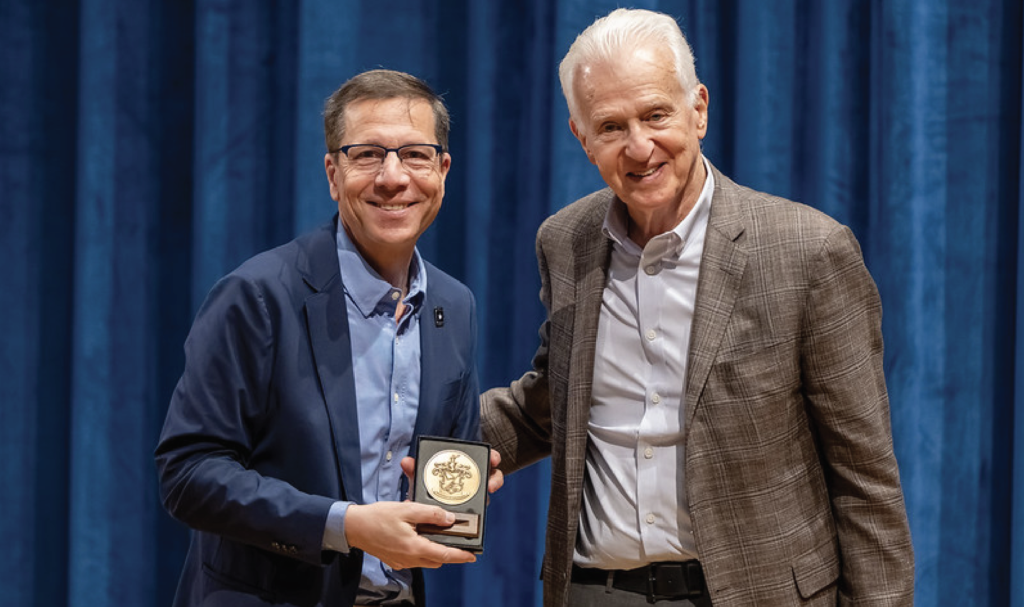We’ve all seen the white trucks of E&R Campus Laundry and Dry Cleaners driving across the Choate campus and stopping in front of various dorms. Every week, our laundry bags are whisked away by truck drivers to the E&R headquarters located in Manchester, New Hampshire.
According to Mr. Patrick Caveny, the Director of Sales at E&R, the company takes Choate students’ laundry to New Hampshire to be washed and dried. However, he also noted that E&R is environmentally conscious. “It’s not like we’re constantly driving from New Hampshire to Choate. We actually have a depot right in Hamden, which five trucks work out of. These five trucks go around local schools to pick up the laundry, and then we consolidate it all on a tractor-trailer to transfer to New Hampshire.” He continued, “Because of our size, we’ve been able to embrace things that are more efficient and environmentally-friendly.”
The company’s focus on sustainability coincided with its recent consolidation. In 2006, E&R Cleaners consolidated its various laundry and dry-cleaning facilities into one enormous, 80,000 square foot building. “Before, we were washing the clothes in one building and hampering them across to another building to dry them. It was very inefficient,” stated Mr. Caveny.
2006 was also the year that E&R enhanced its machinery. A new washing machine was bought in an effort to become more environmentally-friendly. “When we put this machine in place, it saved us ten million gallons of water usage in the first year. We were already running very powerful machines compared to the laundry machines in campus dorms,” commented Mr. Caveny. Moreover, the new machinery was so much more efficient that “we were able to turn down the dryer temperature by twelve degrees and decrease the time for the drying cycle by ten minutes,” he said.
The new E&R headquarters is a far cry from the more humble roots of the company. The owner of a local laundromat in Manchester founded E&R Cleaners in the 1960s. Phillips Exeter Academy was the first customer, and in 1986, the Botnick family bought the business and started to expand its operations. “Preparatory schools have really been a niche this company has found, a niche it’s been able to grow,” remarked Mr. Caveny. In the past, E&R also used to be a uniform rental company and a retail dry-cleaning company, but those two divisions were soon dwarfed by the campus laundry division. In the 1990s, E&R started servicing colleges and universities, including Yale University and Dartmouth College, and as of now, ninety-five percent of the company’s business serves educational institutions.
“We’re servicing over 110 schools throughout New England, and we’ll have about 13,000 students using our services this school year,” Mr. Caveny estimated. The services E&R offers are unique compared to its peer companies. “We have a lot of competitors since every town has a laundromat and a dry cleaner. But so far, no one has been able to do everything to the scale we do it,” explained Mr. Caveny. E&R has about 200 employees, including route representatives, office staff, and production people. The employees work together to ensure that every school’s laundry is washed, dried, folded, and delivered on time.
So, how exactly does the process of washing our school’s laundry work? The truck drivers, who are background-checked and drug-tested, are up at four in the morning. “We tell each school that their bags have to be out by 8 a.m., and, typically, these route representatives are doing deliveries before pick-ups,” Mr. Caveny explained. “There are very strict regulations about how many hours a person can drive, and we follow them. By noontime or so, these people are heading back to the company.”
Once the laundry bags arrive in the factory, workers check in each load. Then, they separate the laundry into two nets – one for dark-colored clothes and one for light-colored clothes. The checkers also take out any clothes that should be dry-cleaned and place them on another conveyor belt. “A person in this job will check-in somewhere around twelve to thirteen bundles an hour,” Mr. Caveny remarked. To keep track of the clothes in every load, the company has installed video cameras in the building.
The workers’ schedules fluctuate from week to week. “Right now, they’re probably going to average between nine to twelve hours each day, because school just started and we get a lot more work in the beginning of the year. Once we’re past the beginning of the school year, all these departments will be working eight- to ten-hour days.” Though the workers have varying work hours week to week, Mr. Caveny stated that lay-offs rarely occur at E&R.
“It’s tough to orient the company around the school calendar. The labor forces constantly have to go through times in which people who want to count on forty hours will only get ten a week because schools are all on break.” Mr. Caveny admitted, “If you’re in that job, and you’re making ten to fifteen dollars an hour, then you have to find another job that doesn’t have those weeks. So we do have some turnover that’s related to the fluctuating schedules.” However, Mr. Caveny also noted that many workers enjoy the work schedule, as they are able to spend more time with their kids, who are often home on breaks themselves.
So far, E&R has been able to juggle all their orders successfully. “We’re able to predict our growth every year, so we can try to set up reasonable schedules for everyone,” Mr. Caveny explained. “Still, we don’t know how much work we’re going to have tomorrow until the end of the day today after pick-ups. All we know is that we have to get all the work done, because the students are expecting their laundry at a given time,” he admitted.
In the future, E&R hopes to continue expanding. This year, about 400 Choate students signed up for E&R services, up from around 350.
E&R also hopes to continue exploring ways to improve its operations. “It gets harder as you go on to find more meaningful things to do.” Mr. Caveny stated. For example, “switching the whole fleet to biodiesel: there’s not enough biodiesel stations for us to do that efficiently. We’re pushing our vendor to set up more biodiesel stations so we could maybe do that.”




